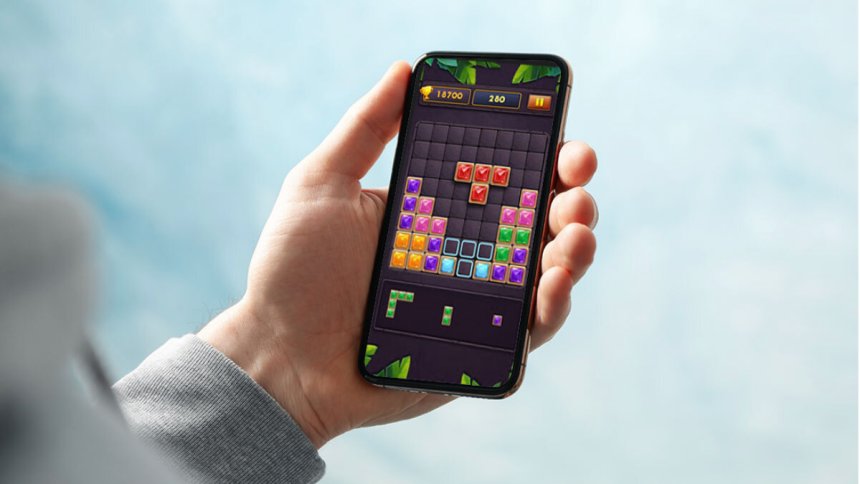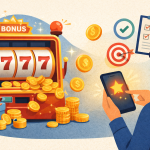Mobile puzzle games have subtly created a leading position in the mobile gaming universe. Though high-energy shooters and engrossing RPGs get the most publicity, puzzle games continue to lead the charts in top-grossing and most-downloaded titles. Titles such as Candy Crush Saga, Monument Valley, and Block Blast have become cultural phenomena — not just because they are enjoyable, but because they strongly connect with the way individuals think, unwind, and get rewarded.
But what actually motivates user behavior in these games? What draws players back day after day, completing level after level? Learning about user behavior in puzzle-based mobile games isn’t only for developers and marketers — it’s at the heart of building enduring player engagement, enhancing monetization practices, and building better gameplay experiences.
Let’s dive into the psychological and behavioral trends behind puzzle game players — and how this insight informs game design and success.
The Function of Challenge, Reward, and Progression
Perhaps the most stable factor in puzzle-mobile games is challenge vs. reward. As prescribed by game design psychology, the player is happiest when the game offers a peak level of challenge — sufficiently challenging to be stimulating yet not so challenging as to become discouraging. This is achieved by what psychologists refer to as the flow state, whereby players forget about time and become one with gameplay.
Players also yearn for advancement. Whether it is the unlocking of new levels, a higher score, or badges, the feeling of advancement resonates with our intrinsic desire to improve. Most players look for shortcuts or methods to move ahead faster. This accounts for the popularity of software like a Block Blast cheat, which enables players to beat tough levels or speed up their game. Though controversial, these tools illustrate a larger trend among players to keep moving and not getbogged down.
Player Segments in Puzzle Games
Not all gamers play puzzle games identically. Facebook Gaming’s research breaks down puzzle players into four segments:
- Relaxers – Play to relax and de-stress.
- Achievers – Enjoy completing levels and earning rewards.
- Competitors – Compete for high scores and leaderboards.
- Escapists – Play puzzle games as an escape from real-world worries.
Knowing these personas is crucial for developers trying to create compelling features. Relaxers, for instance, favor soothing visuals and relaxing soundtracks. Competitors, however, are sensitive to time challenges, worldwide rankings, and multiplayer options.
The Power of Habit Formation
Puzzle games tend to use habit loops to sustain long-term play. A habit loop contains three phases: cue, routine, and reward.
- Cue: A notification or reminder alerts the player to open the game.
- Routine: The character performs a puzzle or sequence of tasks.
- Reward: The user is awarded points, coins, or visual reward.
This loop, executed each day, may turn puzzle playing into a habitual activity, something akin to viewing email or swiping social media. According to a paper published in ScienceDirect, several puzzle games intentionally integrate these loops for this purpose, utilizing information to adjust the timing and sort of cues and rewards delivered.
Cognitive Load and User Satisfaction
According to cognitive load theory, users operate optimally when information is provided in a manner corresponding to their cognitive processing ability. Puzzle games with too much visual noise, rules, or mechanics for players to keep track of typically experience high rates of poor retention.
Developers need to find a balance: the new puzzles should be new but not entirely foreign. They typically achieve this by adding one new mechanism at a time and then building prior skills into later challenges. The gradual learning curve maximizes satisfaction and enhances retention.
In a study on Android game user behavior by SDLC Corp, the researchers discovered that games offering intelligent tutorials and seamless progression maintained 30% more players after 7 days than games with less accessible learning curves.
Social Influence and Community Building
Even though most puzzle games are solitary experiences, social aspects have a significant influence on user behavior.Sharing scores, giving lives, or competing in weekly tournaments produces a sense of community and healthy competition.
Adding social layers is particularly appealing to competitor and achiever personality types. Facebook’s study determined that players who connected to groups or shared achievements with friends were 2.5 times more likely to become long-term gamers.
Building in community features isn’t only good UX — it builds a retention driver based on our built-in need for belonging and social affirmation.
The Function of Microtransactions and Rewards
Freemium puzzle games tend to monetize via microtransactions, providing players with the ability to purchase additional moves, boosters, or lives. Spending money tends to be at a moment of high emotional investment — after multiple failed attempts at a level or when about to complete a challenging obstacle.
User behavior studies indicate that although few players become paying customers, they do so on the basis of perceived value and emotional return. Players will spend if they feel their purchase will result in a high success likelihood.
But it also highlights the importance of fairness. Games that feel “pay-to-win” tend to turn off players. Transparency, balance, and other earning mechanisms (e.g., viewing ads or doing challenges) are key to keeping players interested and monetization moral.
Why Players Depart: Churn Reasons
No less critical to grasping is understanding why they leave. Standard churn triggers are:
- Recurring play: With a lack of change, players tire of it.
- Paywalls: Unless they pay, progression gets inhibited, leading players to uninstall.
- Too many advertisements: Overinteruption interrupts immersion.
- Failure to update: Players are tired of stagnant content.
Developers can fight churn by regularly releasing new levels, providing limited-time challenges, and gathering feedback from their user base. Personalization — such as recommending levels based on skill — can also enhance player retention.
Conclusion
It’s not just a matter of analyzing clicks and session lengths to understand user behavior in puzzle-based mobile games. It’s an intense examination of psychology, motivation, habit formation, and emotional return. Successful games leverage these concepts to craft experiences that are not only fun but also personally resonant.
Whether you’re a coder looking to increase retention, a marketer hoping to acquire the right audience, or a gamer wondering why you can’t get enough of matching brightly colored blocks — understanding the “why” of behavior puts everyone in a position to win.
Lynn Martelli is an editor at Readability. She received her MFA in Creative Writing from Antioch University and has worked as an editor for over 10 years. Lynn has edited a wide variety of books, including fiction, non-fiction, memoirs, and more. In her free time, Lynn enjoys reading, writing, and spending time with her family and friends.















